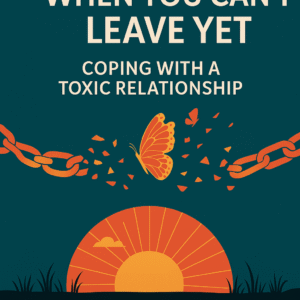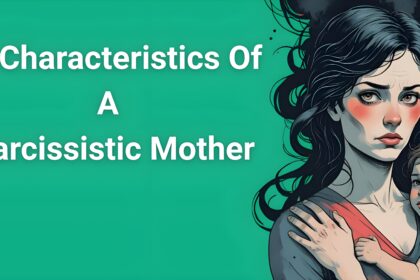How to deal with narcissistic family members: Top 10 ways – this search represents the desperation of millions who feel trapped in family systems where leaving isn’t an option, but staying is slowly destroying their mental health. After working with thousands of survivors through NarcissismExposed.com as a Certified Narcissistic Abuse Specialist, I can tell you that family narcissistic abuse creates unique challenges that require specialized strategies most people never learn.
- Understanding the Unique Challenge of Narcissistic Family Systems
- How to Deal with Narcissistic Family Members: Top 10 Ways to Protect Yourself
- Implementing Your Family Protection Plan
- Long-Term Healing and Family Relationship Management
- Best Workbook for you feel stuck
- How to Survive When You Can’t Leave Yet
- Key Takeaways: How to Deal with Narcissistic Family Members Successfully
- Frequently Asked Questions
The devastating reality is that narcissistic family members weaponize family loyalty, social expectations, and emotional manipulation to maintain control over relatives who can’t simply walk away like they would from a romantic partner. Unlike other abusive relationships, family ties create complex webs of obligation, guilt, and shared history that narcissists exploit to maintain their power and control.
What makes family narcissistic abuse particularly damaging is how it’s often invisible to outsiders, normalized within family systems, and perpetuated across generations. You’re not just dealing with one person’s manipulation – you’re navigating an entire family dynamic that has been shaped by years or decades of narcissistic control and enabling behaviors.
Understanding how to deal with narcissistic family members requires recognizing that these relationships operate by different rules than healthy families, and protecting yourself requires strategies that account for the unique challenges of family loyalty, shared events, and the involvement of other family members who may not understand or acknowledge the abuse.
Understanding the Unique Challenge of Narcissistic Family Systems
Before exploring how to deal with narcissistic family members through specific strategies, it’s essential to understand why family narcissistic abuse creates such unique challenges that require specialized approaches different from other forms of narcissistic abuse.
Family narcissistic abuse operates through complex systems of enabling, denial, and generational patterns that make individual change difficult without addressing the entire family dynamic. Unlike romantic relationships where you can choose to leave, family relationships involve social expectations, shared responsibilities, and often financial entanglements that make complete separation difficult or impossible.
The Family Loyalty Trap
Narcissistic family members excel at weaponizing family loyalty and social expectations to maintain control over their relatives. They use phrases like “family comes first,” “blood is thicker than water,” and “you only have one mother/father” to guilt family members into accepting abusive treatment.
This loyalty trap includes:
- Expectations that family members should tolerate behavior they wouldn’t accept from strangers
- Social pressure to maintain relationships regardless of personal cost
- Guilt about setting boundaries with people who “love” you
- Fear of being ostracized from the entire family system
- Pressure to enable narcissistic behavior to keep family peace
Research from the Journal of Family Psychology shows that individuals in narcissistic family systems often develop complex trauma responses that include chronic guilt, people-pleasing behaviors, and difficulty trusting their own perceptions about family dynamics.
The Generational Pattern Challenge
One of the most complex aspects of learning how to deal with narcissistic family members is understanding how these patterns repeat across generations, creating family cultures where narcissistic behavior is normalized and healthy boundaries are seen as selfish or disloyal.
Generational patterns typically include:
- Normalization of emotional manipulation and control tactics
- Family myths that protect the narcissistic member’s reputation
- Enabling behaviors passed down through generations
- Children who learn to manage adults’ emotions instead of developing their own emotional skills
- Family roles that serve the narcissist’s needs rather than individual family members’ growth
How to Deal with Narcissistic Family Members: Top 10 Ways to Protect Yourself
The following ten strategies provide practical, evidence-based approaches for managing narcissistic family members while protecting your mental health and wellbeing. These methods acknowledge the reality that complete no-contact may not be possible while providing tools for survival and healing.
1. Master the Gray Rock Method for Family Settings
The gray rock method involves becoming as uninteresting and unresponsive as possible during interactions with narcissistic family members. This technique reduces the emotional drama and attention-seeking behavior that narcissists thrive on while allowing you to maintain necessary family contact.
Gray rock implementation in family settings:
- Provide minimal responses to emotional manipulation attempts
- Avoid sharing personal information about your life, relationships, or achievements
- Keep conversations focused on neutral topics like weather or general current events
- Respond to questions with brief, factual answers that don’t invite further probing
- Avoid expressing strong emotions or opinions that could be used against you later
Why this works: Narcissistic family members feed on emotional reactions and personal information they can use to manipulate or control. By becoming uninteresting, you reduce their motivation to target you while maintaining the minimum contact needed for family functions.
Implementation tips:
- Practice neutral facial expressions and body language
- Prepare standard responses to common manipulation tactics
- Bring a book or engage in activities that naturally limit conversation
- Have an exit strategy for when gray rock isn’t sufficient
2. Establish and Enforce Information Boundaries
One of the most crucial aspects of how to deal with narcissistic family members involves controlling the flow of personal information that could be weaponized against you. Narcissistic family members often gather information about your life to use in future manipulation attempts or to share gossip that damages your reputation within the family.
Information boundary strategies:
- Share only surface-level information about your work, relationships, and personal life
- Avoid discussing your therapy, personal growth, or healing journey
- Don’t reveal financial information, including income, purchases, or investments
- Keep your parenting decisions and family plans private
- Avoid sharing your opinions about other family members or family dynamics
What to share instead:
- General updates about non-controversial topics
- Neutral information about hobbies or interests that can’t be weaponized
- Factual information about logistical matters (arrival times, dietary restrictions)
- Safe topics that redirect attention away from personal matters
Protection strategies:
- Ask trusted family members not to share your personal information
- Be aware that narcissistic family members may pump other relatives for information about you
- Consider what information is truly necessary for family functioning versus what feels obligatory to share
3. Create Physical and Emotional Safety Plans
Protecting yourself from narcissistic family members requires advance planning for family gatherings, holidays, and unexpected encounters. Having clear safety plans helps you maintain boundaries while managing the stress of family interactions.
Physical safety planning:
- Arrange your own transportation to family events so you can leave when necessary
- Book separate accommodations when traveling for family visits
- Identify safe spaces within family homes where you can retreat if needed
- Bring a trusted friend or supportive family member when possible
- Have emergency contacts and exit strategies prepared
Emotional safety planning:
- Set time limits for family visits and stick to them
- Practice self-soothing techniques you can use during stressful interactions
- Prepare responses to common manipulation tactics or triggering comments
- Schedule decompression time after family events
- Have support people you can contact during or after difficult family interactions
Boundary enforcement planning:
- Decide in advance which behaviors you will and won’t tolerate
- Practice phrases for deflecting manipulation or changing subjects
- Plan consequences for boundary violations that you can actually implement
- Identify which family members are safe to interact with and which to avoid
4. Implement Strategic Limited Contact
Unlike romantic relationships where no-contact might be possible, family relationships often require strategic limited contact that minimizes harm while maintaining necessary connections. This approach helps you participate in important family events while protecting your wellbeing.
Strategic limited contact includes:
- Attending only the most important family gatherings (weddings, funerals, major holidays)
- Limiting visit duration to what you can emotionally handle
- Choosing specific family events to skip when your mental health requires it
- Communicating through intermediaries when possible
- Using email or text for necessary communication to avoid phone manipulation
Family event strategies:
- Arrive late and leave early to minimize exposure time
- Stay busy with helpful activities (cooking, cleaning, childcare) that limit one-on-one conversation
- Position yourself near supportive family members who can provide emotional buffering
- Take frequent breaks (bathroom breaks, walks outside, phone calls)
- Have prepared excuses for early departure if needed
Communication boundaries:
- Don’t answer phone calls immediately – let them go to voicemail so you can respond when you’re prepared
- Use text messages for logistics to avoid emotional manipulation in phone conversations
- Set specific times for family communication rather than being available on demand
- Avoid deep or personal conversations that could be weaponized later
5. Protect Your Children from Narcissistic Grandparents and Relatives
One of the most challenging aspects of how to deal with narcissistic family members involves protecting your children from manipulation while managing family expectations about grandparent/relative relationships. This requires vigilant supervision and clear boundaries about how your children are treated.
Child protection strategies:
- Never leave your children alone with narcissistic family members
- Prepare age-appropriate explanations for why certain family members require careful handling
- Teach your children about emotional manipulation and inappropriate behavior
- Monitor conversations between narcissistic relatives and your children
- Debrief with your children after family visits to address any concerning interactions
Boundary setting for children:
- Establish rules about gift-giving that don’t create obligation or manipulation
- Don’t allow narcissistic family members to undermine your parenting decisions
- Protect your children from being put in the middle of adult conflicts
- Set clear consequences for family members who manipulate or inappropriately treat your children
- Trust your instincts about which family members are safe for your children to be around
Teaching resilience:
- Help your children understand that some adults don’t behave appropriately
- Teach emotional regulation skills that help them handle difficult family interactions
- Validate their feelings about confusing or uncomfortable family dynamics
- Model healthy boundaries and self-protection strategies
- Ensure your children have safe adults they can talk to about family concerns
6. Build Strategic Alliances Within the Family System
Narcissistic family members often work to isolate their targets and turn family members against each other. Building alliances with supportive family members creates protection and validation while reducing the narcissist’s ability to control family narratives.
Alliance building strategies:
- Identify family members who recognize the narcissistic behavior patterns
- Share information about narcissistic abuse with family members who are open to understanding
- Create private communication channels with supportive relatives
- Coordinate responses to narcissistic manipulation with allied family members
- Support other family members who are also targets of narcissistic abuse
Family meeting strategies:
- Work with allies to present united fronts on important family decisions
- Support each other in maintaining boundaries with narcissistic family members
- Share the emotional labor of managing family dynamics among multiple people
- Create backup plans for family events that don’t rely solely on your presence
- Validate each other’s experiences and perceptions about family dysfunction
Protection through numbers:
- Attend family events with supportive family members when possible
- Have witnesses present during important conversations with narcissistic family members
- Share information about manipulation tactics so other family members can recognize them
- Create group texts or communication channels that bypass the narcissistic family member
- Support family members who are ready to set their own boundaries
7. Develop Emotional Regulation Skills for Family Interactions
Learning how to deal with narcissistic family members requires developing specific emotional regulation skills that help you maintain stability during triggering family interactions. These skills protect your mental health while allowing you to function within necessary family relationships.
Pre-interaction preparation:
- Practice mindfulness and grounding techniques before family events
- Set realistic expectations about family interactions rather than hoping for positive changes
- Remind yourself of your boundaries and commitment to self-protection
- Prepare emotionally for potential manipulation or triggering behaviors
- Focus on your own wellbeing rather than trying to manage other people’s emotions
During-interaction strategies:
- Use deep breathing techniques to manage anxiety and emotional activation
- Practice observing family dynamics rather than becoming emotionally reactive
- Take regular breaks to reset your emotional state
- Use positive self-talk to counter gaslighting or manipulation attempts
- Focus on factual observations rather than emotional interpretations
Post-interaction recovery:
- Schedule decompression time after family events
- Process your experiences with trusted friends or therapists
- Practice self-compassion about any emotional reactions you experienced
- Review what worked well and what you might do differently next time
- Engage in self-care activities that restore your emotional equilibrium
8. Create Financial Independence and Security
Narcissistic family members often use financial dependence as a control mechanism, making it crucial to establish financial independence as part of your protection strategy. Financial autonomy provides practical freedom to set boundaries and make choices based on your wellbeing rather than financial necessity.
Financial independence strategies:
- Avoid accepting loans or financial gifts that come with strings attached
- Build emergency funds that allow you to leave family situations when necessary
- Maintain separate bank accounts and financial information privacy
- Avoid co-signing loans or mixing finances with narcissistic family members
- Develop career and income sources that don’t depend on family connections
Holiday and gift-giving boundaries:
- Set clear limits on gift exchanges that don’t create financial pressure
- Avoid accepting expensive gifts that create feelings of obligation
- Don’t allow family members to use financial generosity as manipulation tools
- Contribute to family events within your means without overextending financially
- Refuse financial assistance that comes with behavioral expectations or control
Long-term financial protection:
- Ensure your estate planning documents protect your children from narcissistic family members
- Maintain financial privacy about your income, savings, and investments
- Build financial stability that allows you to make family decisions based on emotional safety rather than economic necessity
- Consider the financial implications of family caregiving responsibilities
- Protect your financial information from family members who might use it manipulatively
9. Practice Strategic Truth-Telling and Family Myth Disruption
Narcissistic family systems often operate through shared myths and denial about family dysfunction. Learning how to strategically challenge these myths while protecting yourself requires careful consideration of timing, audience, and potential consequences.
Truth-telling strategies:
- Share your experiences with family members who are ready to hear them
- Use specific examples rather than general accusations when discussing family dynamics
- Focus on behavior patterns rather than labeling or diagnosing family members
- Validate other family members’ experiences while sharing your own
- Choose your battles carefully – not every myth needs to be challenged immediately
Myth disruption techniques:
- Refuse to participate in family stories that whitewash narcissistic behavior
- Don’t enable family members by making excuses for narcissistic behavior
- Share factual information about what happened during family events
- Support family members who speak truth about family dysfunction
- Document important family interactions to maintain accuracy of your memories
Self-protection during truth-telling:
- Expect backlash and retaliation when you challenge family myths
- Have support systems in place before disrupting family narratives
- Start with small truths before addressing major family secrets
- Be prepared for some family members to reject your perspective
- Focus on your own healing rather than trying to change others’ perceptions
10. How to Deal with Narcissistic Family Members: Develop Exit Strategies
The final crucial strategy involves developing realistic exit strategies for different scenarios, from individual family interactions to potentially withdrawing from the family system entirely if necessary. Having clear exit plans provides psychological safety and practical options when family situations become unbearable.
Immediate exit strategies:
- Prepare believable reasons for leaving family events early
- Arrange independent transportation for all family gatherings
- Have emergency contacts you can call for support or rescue
- Practice phrases for ending conversations or interactions quickly
- Identify safe people and places you can go when family situations become overwhelming
Medium-term exit strategies:
- Gradually reduce your involvement in family events and communications
- Build support networks outside the family system
- Develop holiday and celebration traditions that don’t depend on family participation
- Create backup plans for important life events that might traditionally involve family
- Establish independent relationships with extended family members who support your wellbeing
Long-term exit strategies:
- Consider the possibility of very limited or no contact if family relationships continue to harm your mental health
- Develop financial and emotional independence that allows you to make decisions based on your wellbeing
- Build chosen family relationships that provide the support and connection healthy families should offer
- Focus on breaking generational patterns to protect your own children from family dysfunction
- Remember that protecting yourself from harm is not betrayal – it’s survival
Implementing Your Family Protection Plan
Understanding how to deal with narcissistic family members through these ten strategies is just the beginning. Implementation requires patience, practice, and ongoing adjustment as family dynamics shift and your own healing progresses.
Starting Small and Building Consistency
Begin implementing these strategies gradually rather than attempting dramatic changes all at once. Narcissistic family members are highly sensitive to changes in family dynamics and may escalate their behavior if they sense they’re losing control.
Implementation timeline:
- Start with information boundaries and gray rock techniques during routine family interactions
- Practice emotional regulation skills during lower-stakes family contact
- Gradually implement physical safety strategies for family events
- Build alliances with supportive family members over time
- Develop exit strategies before you desperately need them
Common implementation challenges:
- Guilt about setting boundaries with family members
- Pressure from other family members to return to previous patterns
- Escalation of narcissistic behavior when control is threatened
- Difficulty maintaining consistency when you feel sorry for family members
- Exhaustion from constantly managing family dynamics
Managing Family Resistance and Backlash
When you begin implementing boundaries and protection strategies, expect resistance from both narcissistic family members and enablers within the family system. This resistance is normal and indicates that your boundaries are working to protect you.
Common forms of resistance:
- Increased manipulation attempts and emotional blackmail
- Triangulation efforts to turn other family members against you
- Guilt campaigns about how your boundaries are “hurting the family”
- Escalation of crisis creation to force you back into caretaking roles
- Threats of cutting off contact or excluding you from family events
Strategies for managing backlash:
- Expect resistance and don’t take it as evidence that your boundaries are wrong
- Maintain your protection strategies even when family members pressure you to abandon them
- Document escalating behavior to validate your decision to maintain boundaries
- Seek support from therapists or support groups who understand family narcissistic abuse
- Remember that their reaction to your boundaries reveals the necessity of those boundaries
Long-Term Healing and Family Relationship Management
Best Workbook for you feel stuck
How to Survive When You Can’t Leave Yet
Original price was: $49.00.$27.99Current price is: $27.99.
Learning how to deal with narcissistic family members is an ongoing process that requires continuous adjustment as your healing progresses and family dynamics evolve. The goal isn’t to fix the family system but to protect yourself while maintaining whatever level of contact feels healthy and sustainable for you.
Building Emotional Resilience
Recovery from family narcissistic abuse involves developing emotional resilience that allows you to interact with family members without being destabilized by their behavior. This resilience comes from understanding family patterns, maintaining strong boundaries, and building support systems outside the family.
Resilience building activities:
- Working with therapists who understand family narcissistic abuse dynamics
- Joining support groups for adult children of narcissistic parents
- Developing interests and relationships that have nothing to do with your family
- Practicing self-compassion for the time it takes to heal from family trauma
- Learning to trust your own perceptions about family dynamics rather than gaslighting yourself
Breaking Generational Patterns
One of the most empowering aspects of learning how to deal with narcissistic family members is using your experience to break generational patterns and create healthier family cultures for future generations.
Pattern-breaking strategies:
- Teaching your children about healthy boundaries and emotional regulation
- Modeling self-protection and self-care rather than self-sacrifice
- Creating family traditions that prioritize emotional safety over performance
- Seeking therapy to address your own trauma responses and learned patterns
- Building chosen family relationships that demonstrate healthy love and support
Creating new family cultures:
- Prioritizing emotional authenticity over family image management
- Teaching children that they don’t have to tolerate mistreatment from anyone, including family
- Demonstrating that love includes respect, consideration, and genuine care for each other’s wellbeing
- Creating holiday and celebration traditions that don’t revolve around managing difficult people
- Building family cultures where individual needs and boundaries are respected
Key Takeaways: How to Deal with Narcissistic Family Members Successfully
Learning how to deal with narcissistic family members: Top 10 ways provides a comprehensive framework for protecting yourself while navigating complex family relationships that can’t always be ended completely.
Remember these essential strategies:
- Master the gray rock method to reduce your appeal as a target for manipulation and drama
- Establish information boundaries to prevent narcissistic family members from weaponizing your personal life
- Create safety plans for family interactions that protect both your physical and emotional wellbeing
- Implement strategic limited contact that allows necessary family participation while minimizing harm
- Protect your children from narcissistic relatives through supervision and boundary setting
- Build alliances with supportive family members who recognize and resist family dysfunction
- Develop emotional regulation skills that help you stay stable during triggering family interactions
- Maintain financial independence to ensure your protection strategies aren’t undermined by economic dependence
- Practice strategic truth-telling to challenge family myths while protecting yourself from backlash
- Develop exit strategies for various scenarios from individual interactions to potentially leaving the family system
The path forward involves:
- Implementing these strategies gradually and consistently over time
- Expecting resistance and backlash from family members who benefit from dysfunction
- Building support systems outside the family that validate your experiences and choices
- Focusing on your own healing rather than trying to fix family relationships
- Breaking generational patterns to protect future generations from family trauma
- Understanding that protecting yourself from harm isn’t betrayal – it’s survival and healing
Understanding how to deal with narcissistic family members empowers you to maintain whatever level of family contact feels healthy while protecting your mental health and wellbeing. When people search for these strategies, they’re often feeling trapped between family loyalty and self-preservation. These ten approaches provide practical tools for navigating that impossible choice while prioritizing your own healing and growth.
Your mental health and emotional safety matter more than maintaining family peace or meeting others’ expectations about family relationships. The strategies outlined here help you honor your need for family connection while refusing to sacrifice your wellbeing for others’ comfort or convenience.
Frequently Asked Questions
How do I handle holidays and family gatherings with narcissistic family members?
Holidays require extra planning and boundary enforcement since they’re high-stress times when family dysfunction often intensifies. Use strategic limited contact by arriving late and leaving early, bring your own transportation, and have exit strategies prepared. Focus on connecting with supportive family members, keep conversations surface-level, and take frequent breaks. Consider creating your own holiday traditions that don’t require managing difficult family dynamics, and remember that skipping family events is sometimes the healthiest choice for your mental wellbeing.
What if other family members don’t see the narcissistic behavior and think I’m the problem?
This is extremely common in narcissistic family systems where the narcissist has cultivated a positive image while privately abusing certain family members. Focus on building relationships with family members who do recognize the dysfunction, document concerning behaviors for your own validation, and avoid trying to convince family members who aren’t ready to see the truth. Work with a therapist who understands family narcissistic abuse to process the isolation and invalidation you’re experiencing. Remember that your experience is valid regardless of whether others recognize it.
Should I tell my children about their narcissistic grandparents or relatives?
Yes, but in age-appropriate ways that prepare them without creating fear or confusion. Young children need simple explanations about why they’re always supervised around certain relatives and why some adult behavior isn’t okay. Older children and teenagers can understand more about manipulation tactics and family dynamics. Focus on teaching them emotional regulation skills, validating their feelings about uncomfortable family interactions, and ensuring they know they can talk to you about anything that makes them uncomfortable with family members.
How do I protect myself financially from narcissistic family members?
Maintain complete financial independence by avoiding loans, gifts with strings attached, or any financial entanglements that could be used for control. Keep your financial information private, build emergency funds that allow you to leave family situations when necessary, and don’t accept expensive gifts that create feelings of obligation. Be especially careful about family business relationships or co-signing any financial documents. Financial autonomy is crucial for maintaining the boundaries necessary to protect yourself from family manipulation.
What if I’m the primary caregiver for an aging narcissistic parent?
Caregiving for narcissistic parents requires extra support and boundary enforcement since the caretaking role can intensify manipulation and abuse. Consider hiring professional caregivers to reduce your direct involvement, involve other family members in caregiving responsibilities, and maintain strict boundaries about what care you will and won’t provide. Work with elder care specialists who understand difficult family dynamics, and remember that you’re not obligated to sacrifice your own wellbeing to provide care for someone who has abused you. Explore community resources and professional care options that can supplement or replace family caregiving.
How do I know when it’s time to consider going no-contact with family members?
Consider no-contact when family relationships consistently harm your mental health despite implementing protection strategies, when narcissistic family members threaten or harm your children, or when maintaining contact prevents you from healing from trauma. Other indicators include escalating abuse that threatens your safety, financial exploitation that jeopardizes your security, or family situations that require you to compromise your core values or wellbeing. Remember that no-contact doesn’t have to be permanent, and you can always reassess this decision as your healing progresses and circumstances change.
What should I do if I feel guilty about setting boundaries with family members?
Guilt about family boundaries is normal and often indicates how thoroughly family members have trained you to prioritize their comfort over your wellbeing. Work with a trauma-informed therapist to process these guilt feelings and understand their origins in family conditioning. Practice self-compassion and remind yourself that protecting yourself from harm isn’t selfish or cruel. Build relationships with people who support your boundary-setting efforts, and remember that healthy families want their members to have strong boundaries and good self-care practices. The guilt often decreases as you experience the benefits of better boundaries and improved mental health.







